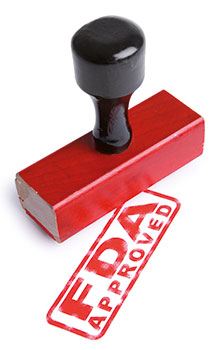Materials in contact with foodstuffs: how the FDA works
The Food and Drug Administration (FDA) is the body responsible for the control and regulation of food and pharmaceuticals that operates within the US Department of Health. The US, what is more, has always been a strategic market for all food and pharmaceutical industry machinery manufacturers, which is why it is essential to design solutions that meet FDA regulations. The US attorney Jeffrey A. Keithline, partner of the firm Keller and Heckman, spoke recently during a theme conference hosted at Ucima headquarters.
 Materials in contact with foodstuffs: definitions and regulations
Materials in contact with foodstuffs: definitions and regulations
The FDA defines materials susceptible to food contact - including packaging - as “food additives”.
These materials are regulated by the Federal Food, Drug and Cosmetic Act: a series of laws passed by the US Congress to protect the safety of food, drugs and cosmetics, which refers to «any substance whose use can lead - or you think may bring - the substance itself to become part of the food (...) in cases in which such a substance is not considered safe».
The definition specifically considers those substances that are used to «produce, package, process, prepare, process, pack, transport or hold food» Equally important is the definition of “adulterated food” that according to the FDA is «what supports or contains any poisonous or harmful substance, or unauthorized food additives», which fall under the Food additive regulations.
Among materials susceptible to food contact examined we have paper, plastics and rubbers, with particular reference to their use in the packaging phase. Some regulations concern particular phases of the process (such as bonding or coating) while others specifically consider the various materials (eg polystyrene, dyes and detergents), considering both occasional and continuous use. FDA regulations governing indirect food additives (FCS or “food contact substances”) may change, but usually maintain a structure that defines and limits the use, drawing up a list of admissable adjuvants, while establishing the test type and testing methodology in which the material must be subjected to in the control phase.
Types of materials covered and regulations
Particular attention is paid to resin and polymer coatings, governed by the CFR (Code of Federal Regulation) nr. 21, section 175.300, which are listed and analyzed in cases where they are used to coat components, metallic or not, by examining the reaction in contact with a number of different substances. The use of rubber is also regulated and governed (CFR 21, section 177.2600), taking into consideration both natural and synthetic types and defining permitted uses (for example, the production of belts, hoses or seals) and those not allowed (the production of food packaging). Great importance is also given to lubricants that may accidentally come into contact with food (CFR 21, section 178.3570).
FDA regulations considers both cases where lubricants come into contact with seals and those where they are used on parts of the machine directly exposed to food contact (in the case of the conveyor belts). The rules govern in particular the level of residues conceded depending on the type of material and the surface of application, for example, the residues of lubricants allowed on metal components. Other materials considered and disciplined are mineral oils (CFR 21, section 178.3620), which may or may not be used as lubricants and the membranes used in the packaging process (CFR 21, section 177.2550), which must ensure high standards of hygiene.
Food Contact Notification Program, the new procedures for FCS
The food contact substances must pass through a process called “Premarket Notification,” which is the process through which the FDA authorizes the use of indirect food additives, provided that their concentration in the diet is less than 50 ppb. For this reason, at the end of the twentieth century a Food Contact Notification Program was launched: a program for the reporting and regulation of new FCS, that between 2000 and 2009 analyzed a total of 924 substances (76% of which were accepted). In recent years, however, it was necessary to define an approach that would change the approval of these substances, accelerating the entry onto the market of the same.
Today, the FDA has 120 days from the date of receipt of a dossier by an organism notifier to object to the documentation received (which must contain chemical toxicological, and environmental information and various certifications), after which the FCS - except for actions by the FDA - become effective. Though FCS can be used even though these have not been approved by the FDA, for example in the case of substances generally recognized as safe, known as “GRAS” (Generally Recognised As Safe) or that have barrier characteristics capable of preventing the migration of components. Indeed though there is a regulatory vacuum regarding metals and food contact, for which, as is the custom in the US legal system, reference to previous sanctions are made. For example, in the Federal Register Notice emitted by the FDA in 1996 it is established that aluminum, numerous types of stainless steel and tin plate are part of the GRAS listing.
Assess possible contamination levels following GMPs
For analyses on plants and systems for food use, designed to assess the actual risk of contamination, FDA recommends simulations aimed at achieving 100% migration, so as to assume the worst possible scenario. During his talk at the Ucima headquarters, the lawyer Keithline reported, for example, the case of an analysis carried out on the possible contamination by a lubricating grease in a conveyor belt attached to a system for packaging poultry.
Even considering a round-the-clock use of the line seven days a week, assuming a total amount of lubricant in contact with food of half kg each month (the worst possible scenario), this would lead to a minimum migration value to each kg of food, still below the reference value of 50 ppb established by the FDA.
These analyses should not obviously replace or forego tests to be performed on machinery and components that can come into contact with the products to be processed.
Respect for the GMP (Good Manufacturing Practice) is also fundamental : general principles that ensure the production of safe products and components, through compliance with the defined controls. The GMP usually contemplate tests to verify the quality of the product, procedures that evaluate changes in the process to improve the quality of the product and maintaining records and previous data. As regards, specifically, the FDA, the GMP standards require that the quantities of substances must not exceed those reasonably expected to achieve the technical purposes and that the materials in contact with food must be of a purity as to be compatible with the intended use, but still in forms and quantities that do not pose any risk to human health.
What is more they, should not cause changes in terms of taste or color to foods with which they come in contact. It should be noted that any approval of a food additive/FCS does not in any case replace the provisions of the Federal Food, Drug, and Cosmetic Act, which remains the ultimate reference standard.
The need to be FDA Compliant
Ultimately, the machines and the various components used in the US market should be FDA compliant. Among the criteria to be met, it is necessary for the system and its components are manufactured according to GMP mentioned, that are technically compatible with the use for which they were designed, and that are intended exclusively for such use.
Lastly, there remains the requirement that the components and FCS or food additive materials do not alter or modify the taste or smell of food with which they come in contact. A number of certification bodies are called upon to safeguard the above regulation, including the NSF International, headed by the Public Health and Safety Organization, and AMS (Agriculture Marketing Service) that come under the USDA, the Department of US agriculture. Both have specific programs for the food industry and set standards. For example, under the NSF one finds the NSF/ANSI 2 program, dedicated to food industry components, which regulates the minimum standards of reference and levels of hygiene required for the materials, design and construction of components that are required to handle and process food. The NSF/ANSI 51 program, this too applicable to the food sector, is dedicated specifically to the equipment to be used as part of commercial services (for example soft drinks vending machines), taking into consideration the materials and levels of hygiene required for the apparatuses themselves and for the components that are part of them, such as tubing, gaskets and sealants.
Adulterated product: definition
According to section 402 of FFDCA (Federal, Drug and Cosmetic Act) a product, be this food, pharmaceutical or cosmetic product, can be defined as “adulterated” when:
- it contains poisonous substances that make the food a risk to human health;
- it contains an unapproved food additive;
- it consists, in part or entirely, of putrid or decomposing substances;
- it is prepared, packed or held in unhygienic conditions, and may be contaminated or have become a danger to human health;
- its container is partially or entirely made up of any substances that makes the food or product poisonous or dangerous to human health.

















